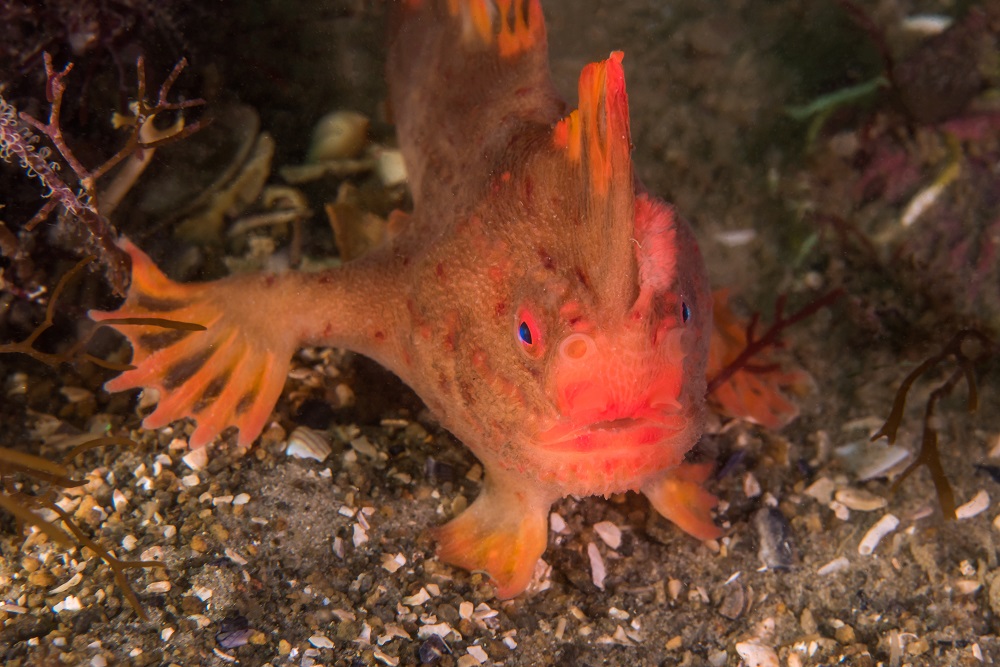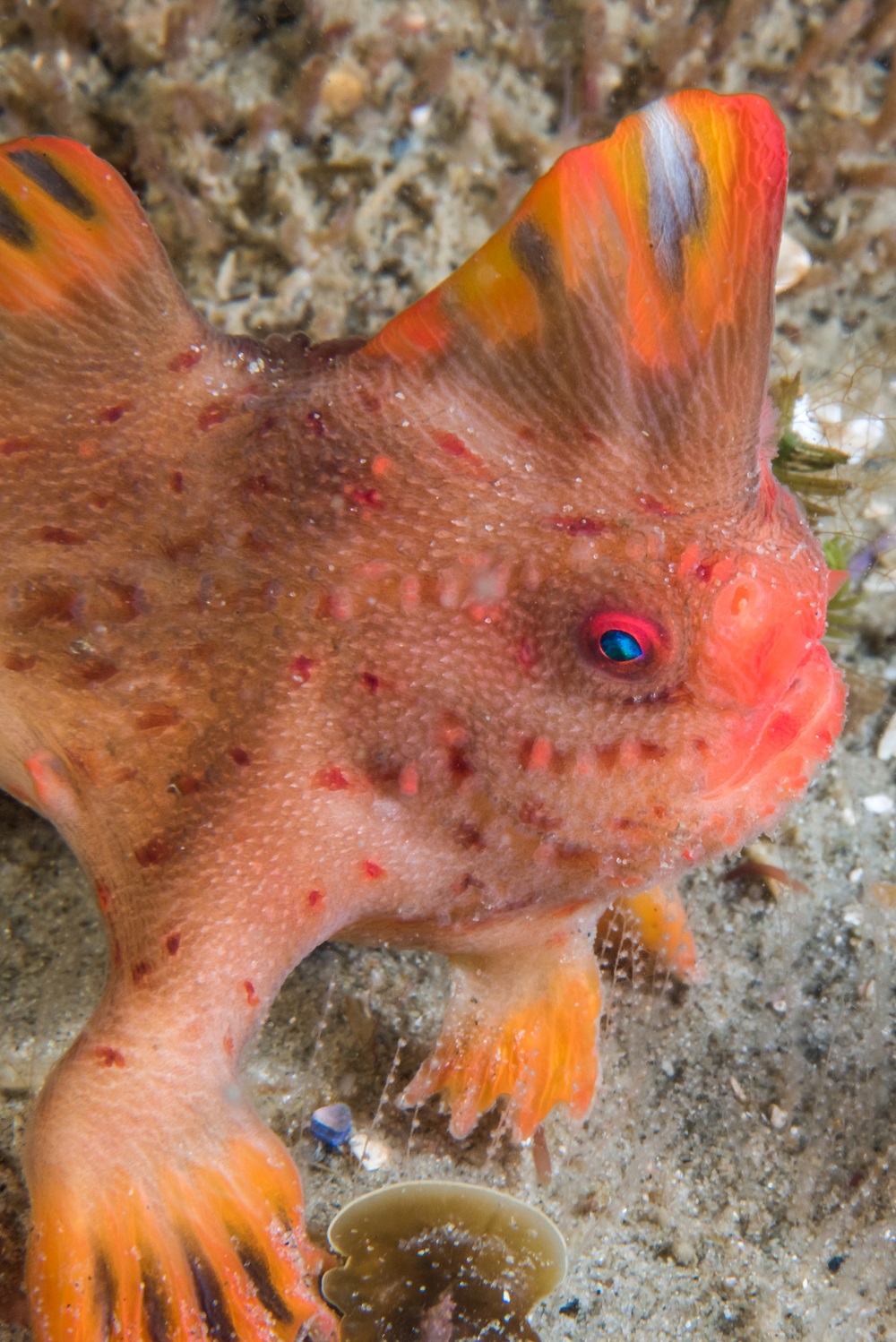
Research aimed at saving some of the world’s rarest fish from extinction received a major boost today with the launch in Hobart of a fundraising appeal.
The funds raised will enable scientists from IMAS, CSIRO, the University of Sydney and others to study and conserve three species of handfish found only around southern Tasmania while also supporting conservation efforts through the National Handfish Recovery Plan.
The discovery this year of a new colony of Red Handfish doubled the estimated number of individuals left from less than 40 to possibly 70-80.
There are thought to be at least 1000 remaining Spotted Handfish but there hasn’t been a confirmed sighting of Ziebell’s Handfish since 2007.
 IMAS scientist Dr Rick Stuart-Smith, who led the team of Reef Life Survey divers that found the new population of Red Handfish, said finding out more about the handfish is a critical first step towards saving them.
IMAS scientist Dr Rick Stuart-Smith, who led the team of Reef Life Survey divers that found the new population of Red Handfish, said finding out more about the handfish is a critical first step towards saving them.
“With the known population of Red Handfish appearing to be less than 100 individuals, this is clearly one of the rarest fish in the world,” Dr Stuart-Smith said.
(Image credits: Rick Stuart-Smith)
“Like their close relatives, the Spotted and Ziebell’s Handfish, Red Handfish are perilously close to extinction but at the moment we just don’t know enough about them to have a real go at saving them.
“Through the Handfish Conservation Project we aim to try to get a better handle on how many there really are left, gather information on the genetic structure of the population, work out whether the two known populations mix, how often they reproduce, and how we can better manage their habitat.
“We also hope to develop new ways to look for them, to have a better chance of finding out whether there are any other populations of Red Handfish that we don’t know about.”
(Video, below, Dr Stuart-Smith talks about red handfish research)
Dr Stuart-Smith said the appeal and the research would complement work already being undertaken through the National Handfish Recovery Team and previous research on the handfishes.
“Government and research organisations are already supporting handfish research, but if we are going to save these unique species we also need help from the community.
“This could be the last chance to save the remaining Red Handfish in the wild.
“Had we started earlier we would have had a better chance and if we wait much longer it may be too late, but right now we can still do something about it,” Dr Stuart-Smith said.
Donations can be made at the Handfish Conservation Project website handfish.org.au